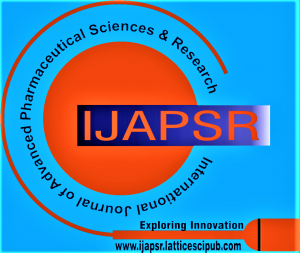![]()
The Global Impact of HIV: A Comprehensive Review
Osama Khatib1, Tala Alshimale2, Aya Alsaadi3, Nasser Thallaj4
1Osama Khatib, Department of Pharmaceutical Chemistry and Drug Quality Control, Faculty of Pharmacy, Al-Rachid University, Damascus, Syria.
2Tala Alshimale, Department of Pharmaceutical Chemistry and Drug Quality Control, Faculty of Pharmacy, Al-Rachid University, Damascus, Syria.
3Aya Alsaadi, Department of Pharmaceutical Chemistry and Drug Quality Control, Faculty of Pharmacy, Al-Rachid University, Damascus, Syria.
4Prof. Dr. Nasser Thallaj, Department of Pharmaceutical Chemistry and Drug Quality Control, Faculty of Pharmacy, Al-Rachid University, Damascus, Syria.
Manuscript received on 21 March 2024 | Revised Manuscript received on 27 March 2024 | Manuscript Accepted on 15 April 2024 | Manuscript published on 30 April 2024 | PP: 6-19 | Volume-4 Issue-3, April 2024 | Retrieval Number: 100.1/ijapsr.C404004030424 | DOI: 10.54105/ijapsr.C4040.04030424
Open Access | Editorial and Publishing Policies | Cite | Zenodo | OJS | Indexing and Abstracting
© The Authors. Published by Lattice Science Publication (LSP). This is an open-access article under the CC-BY-NC-ND license (http://creativecommons.org/licenses/by-nc-nd/4.0/)
Abstract: The Human Immunodeficiency Virus (HIV) has been a significant global health challenge since its discovery in the 1980s, leading to the devastating Acquired Immunodeficiency Syndrome (AIDS). Despite advancements in medical research and antiretroviral therapies, HIV/AIDS remains a pressing public health concern, particularly in resource-limited regions. This comprehensive review provides updated data and scientific insights on the global impact of HIV, shedding light on the current state of the epidemic and the challenges faced in combating it. The review highlights the resurgence of HIV cases in Eastern European countries, such as Ukraine, Estonia, and Latvia, with surprising increases in AIDS cases observed in East Asian countries. However, it is in sub-Saharan Africa that the burden of HIV remains most acute, with high prevalence rates and a significant number of affected individuals. The region requires continued attention and resources to address the complex challenges associated with HIV prevention, treatment, and care. The article delves into the classification and structure of HIV, emphasizing its belonging to the Lentivirinae subfamily, specifically HIV-1 and HIV-2. HIV-1, the predominant viral species globally, exhibits a distinct clinical latency phase, contributing to its persistence and infectivity. The high replication rate and genetic variability of HIV, driven by the error-prone reverse transcriptase enzyme, result in the emergence of diverse subtypes and strains across different regions. Furthermore, the article explores the structural components of HIV-1, including the envelope glycoproteins (gp120 and gp41), matrix protein, and various enzymes critical to the viral life cycle. Despite progress in medical research and access to antiretroviral therapies, HIV/AIDS continues to present challenges such as limited resources, drug resistance, and regional disparities.
Keywords: HIV/AIDS; Global impact; Epidemic; Resource-limited regions; Sub-Saharan Africa; Eastern European countries; Lentivirinae subfamily; Antiretroviral therapies
Scope of the Article: Medical Physiology Pharmaceutical Chemistry
